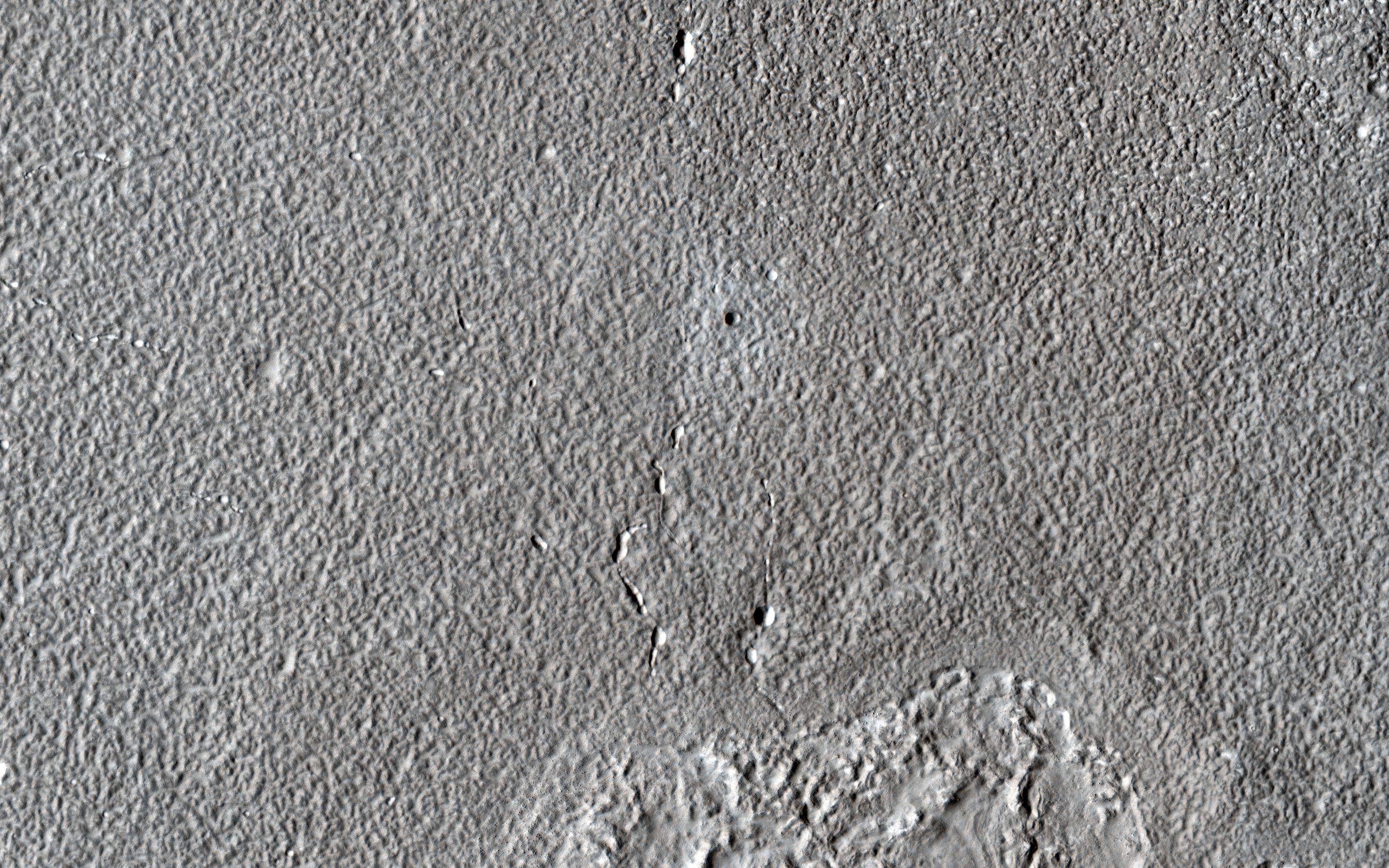
|
A New Impact Marking Fades Away
- Click the image above for a larger view
- Full-Res JPEG (2880 x 1800) (1.3 MB)
- Full-Res TIFF (2880 x 1800) (15.6 MB)
Caption:

Map Projected Browse Image
Click on image for larger version
A HiRISE observation in 2010 covered a new impact crater that formed after December 2007 and before August 2010, based on Context Camera images. HiRISE has been re-imaging these sites to see how rapidly the dark ejecta and blast zone markings disappear as dust is deposited or redistributed.
An animation compares the two images and shows that the dark material has faded into the background, while the new 6.3-meter diameter crater persists.
The map is projected here at a scale of 25 centimeters (9.8 inches) per pixel. (The original image scale is 30.0 centimeters [11.8 inches] per pixel [with 1 x 1 binning]; objects on the order of 90 centimeters [35.4 inches] across are resolved.) North is up.
Background Info:
The University of Arizona, in Tucson, operates HiRISE, which was built by Ball Aerospace & Technologies Corp., in Boulder, Colorado. NASA's Jet Propulsion Laboratory, a division of Caltech in Pasadena, California, manages the Mars Reconnaissance Orbiter Project for NASA's Science Mission Directorate, Washington.
Cataloging Keywords:
| Name | Value | Additional Values |
|---|---|---|
| Target | Mars | |
| System | ||
| Target Type | Planet | |
| Mission | Mars Reconnaissance Orbiter (MRO) | |
| Instrument Host | Mars Reconnaissance Orbiter | |
| Host Type | Orbiter | |
| Instrument | High Resolution Imaging Science Experiment (HiRISE) | |
| Detector | ||
| Extra Keywords | Color, Crater, Dust, Impact, Map | |
| Acquisition Date | ||
| Release Date | 2020-03-20 | |
| Date in Caption | ||
| Image Credit | NASA/JPL-Caltech/University of Arizona | |
| Source | photojournal.jpl.nasa.gov/catalog/PIA23760 | |
| Identifier | PIA23760 | |
